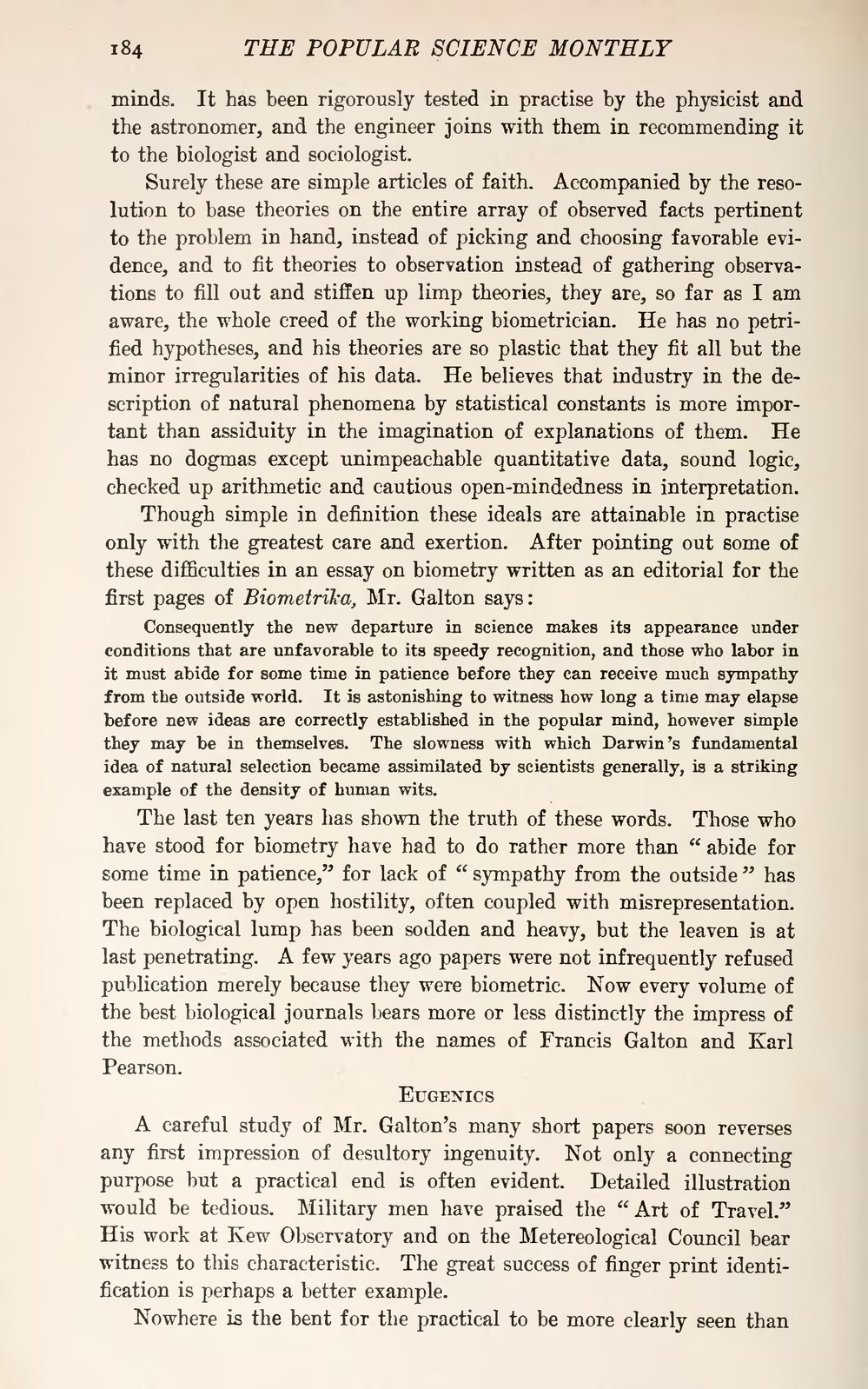minds. It has been rigorously tested in practise by the physicist and the astronomer, and the engineer joins with them in recommending it to the biologist and sociologist.
Surely these are simple articles of faith. Accompanied by the resolution to base theories on the entire array of observed facts pertinent to the problem in hand, instead of picking and choosing favorable evidence, and to fit theories to observation instead of gathering observations to fill out and stiffen up limp theories, they are, so far as I am aware, the whole creed of the working biometrician. He has no petrified hypotheses, and his theories are so plastic that they fit all but the minor irregularities of his data. He believes that industry in the description of natural phenomena by statistical constants is more important than assiduity in the imagination of explanations of them. He has no dogmas except unimpeachable quantitative data, sound logic, checked up arithmetic and cautious open-mindedness in interpretation.
Though simple in definition these ideals are attainable in practise only with the greatest care and exertion. After pointing out some of these difficulties in an essay on biometry written as an editorial for the first pages of Biometrika, Mr. Galton says:
Consequently the new departure in science makes its appearance under conditions that are unfavorable to its speedy recognition, and those who labor in it must abide for some time in patience before they can receive much sympathy from the outside world. It is astonishing to witness how long a time may elapse before new ideas are correctly established in the popular mind, however simple they may be in themselves. The slowness with which Darwin's fundamental idea of natural selection became assimilated by scientists generally, is a striking example of the density of human wits.
The last ten years has shown the truth of these words. Those who have stood for biometry have had to do rather more than "abide for some time in patience," for lack of "sympathy from the outside" has been replaced by open hostility, often coupled with misrepresentation. The biological lump has been sodden and heavy, but the leaven is at last penetrating. A few years ago papers were not infrequently refused publication merely because they were biometric. Now every volume of the best biological journals bears more or less distinctly the impress of the methods associated with the names of Francis Galton and Karl Pearson.
Eugenics
A careful study of Mr. Galton's many short papers soon reverses any first impression of desultory ingenuity. Not only a connecting purpose but a practical end is often evident. Detailed illustration would be tedious. Military men have praised the "Art of Travel." His work at Kew Observatory and on the Metereological Council bear witness to this characteristic. The great success of finger print identification is perhaps a better example.
Nowhere is the bent for the practical to be more clearly seen than
